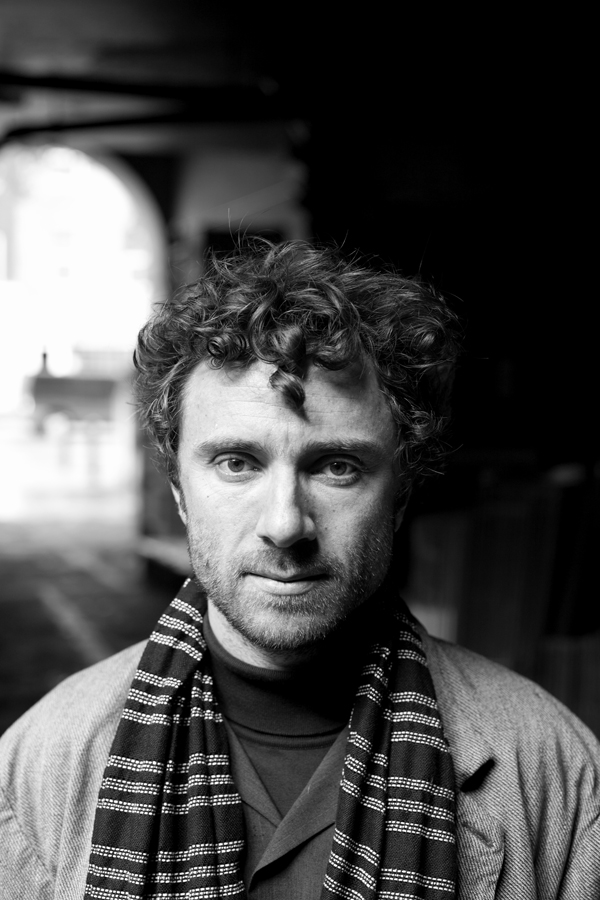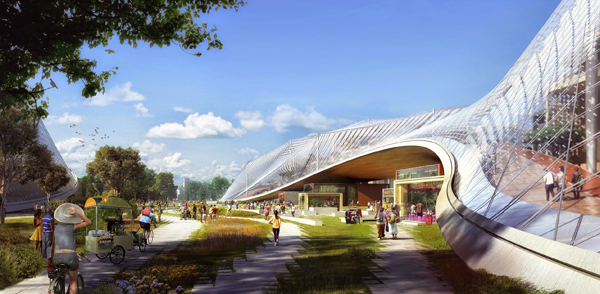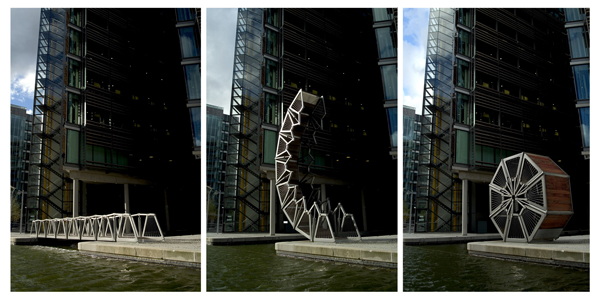
The appeal of intimate spaces: an interview with Thomas Heatherwick
The appeal of intimate spaces: an interview with Thomas Heatherwick
Share
Image above: Learning Hub in Singapore. Image by Hufton and Crow.
Thomas Heatherwick is the founder of Heatherwick Studio. Formed in 1994, the studio now employs a team of over 160 architects, designers and makers, who work on projects across a range of scales based in Kings Cross, London. Penny Craswell speaks to Heatherwick about small architecture for AR 140 – Small Spaces.
Penny Craswell This issue focuses on the topic of small architecture. A lot of your projects seem to combine big and small. Can you tell me about your latest project, the Learning Hub in Singapore?
Thomas Heatherwick The brief that emerged in discussions with the university and the professors was to create a place where you could bump into someone, encouraging the interaction between students rather than just getting them from tutorial room to tutorial room. So we set out to design a building with lots of nooks and crannies, lots of spaces for ambiguous interactions. The tutors wanted to reduce the master/guru relationships in traditional teaching, so we created rooms with no corners. Each of the 56 tutorial rooms is rounded.
The existing buildings of the campus very much follow the Modernist, machine age language of celebrating the massiveness of a university for 30,000 students and that was fine, but responding to this new pedagogy that the professors were pushing, I was interested in breaking down the scale. The existing campus reminded you that you are 1/30,000th of the population of that university. Instead, we were able to create a sense of small, even though we were building a biggish new university building – we were building 12 smallish buildings that come together. The result is 12 skinny towers the size of a small terraced house in plan – six, seven or eight storeys high – that come together and create a human scale between them. The existing horizontal, monotonous elevations are very rectilinear; this design is a complement to that by being very focused on the human scale.
PC So you’re saying that spaces that are intimate are the most appealing – was this the aim with the design of the Googleplex campus at Mountain View, California (co-designed by Bjarke Ingels of BIG)? How did you deal with the huge scale of this project?
TH You’re right. But I can’t talk about this project unfortunately. Take a look at the website and the official release from Google.
PC Huge new metropolises and cities with high density, we’ve got these huge numbers of people living together so the response has to be to break it up into a human scale in some way.
TH I think that’s a challenge of our time. And particularly in places like Asia, where nobody builds anything unless it’s huge. The developers have all got massive plots of land and yet the places we all love to be around tend to be composed of many different smaller buildings, rather than singular mega-blocks.
The challenge for designers like us is how to still engage with such large sites, while retaining the realism that these large projects need to be built up from lots of smaller, interesting human-scale places and spaces. The danger is that big residential developments might feature an interesting design idea, but the idea is repeated too much over a large expanse of space, so that it becomes meaningless.
PC How has your practice changed since you started? Rolling Bridge, B of the Bang, are in some ways small architecture or big art projects, but now you are creating huge-scale projects, such as Googleplex. Has your perspective on small changed?
TH My first project when I was 21 was a building, but it takes a while if you are setting up your own studio to be trusted at a larger scale – buildings are the most expensive things. But I have always been interested in ideas and scale and how they grapple with each other – making space, making form – how humans respond to the physical form in every form.
I don’t see what we do as multidisciplinary, I see it as one discipline – it’s about function and solving problems. I always thought the idea of someone only doing master planning quite weird – everything is made up of the small scale – large scale means nothing unless you understand it when you zoom in.
In my mind I have this soundscape. Imagine when you visited a place – back when everyone had cameras before smartphones – and you would hear this sound of everyone’s camera lens zooming in and out. That’s my studio’s job as designers, to zoom in and look really closely, but also to pull back and reflect strategically. It’s not separate – it’s one realm.
This interview appears in AR140 – Small Spaces, available at selected newsagents, Google Play or Zinio.
You Might also Like



























